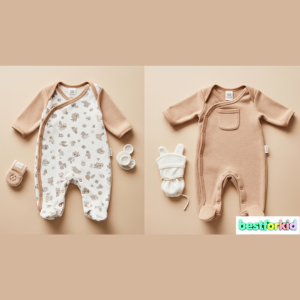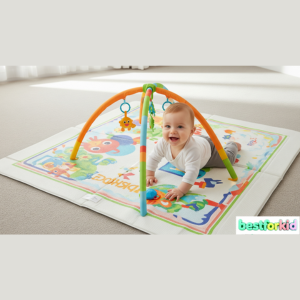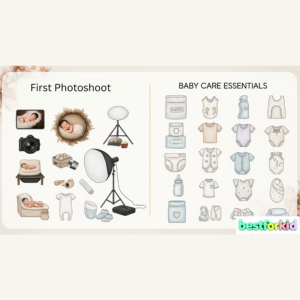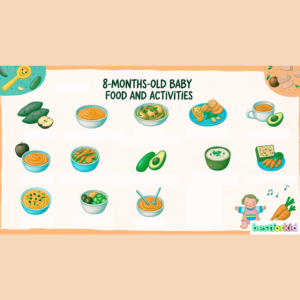
Welcome to the beautiful journey of parenthood! As a new parent in India, you’re embarking on an adventure filled with countless precious moments. One of the most significant aspects of this early journey is watching your little one grow. From their first smile to their first attempt to roll over, every day brings a new development. A key part of this is monitoring your baby’s weight gain, a primary indicator of their health and well-being. This comprehensive guide will help you understand baby’s growth, decode the numbers on weight charts, and celebrate the incredible milestones your baby will achieve in the first six months. We’ll break it down in simple terms, so you can feel confident and informed every step of the way.
What Exactly is a Baby Growth Chart?
Think of a baby growth chart as your baby’s personal progress report for their physical development. It’s a simple tool used by pediatricians and parents to track a child’s growth over time. These charts might look like a complex series of lines and curves, but they are quite easy to understand once you know the basics. They help ensure your baby is growing at a healthy and steady pace. By regularly plotting your baby’s measurements, your doctor can spot any potential health or nutritional issues early on.
Growth charts are essential because they provide a standardized way to see how your baby’s growth compares to other children of the same age and gender. This helps in identifying whether your baby’s development falls within a normal range. Remember, the goal isn’t to hit a specific number but to see a consistent and healthy growth pattern.
The Different Types of Growth Charts
During your baby’s regular check-ups, the doctor will take a few key measurements. Each of these corresponds to a specific type of growth chart:
- Weight-for-Age: This is the most commonly used chart. It tracks your baby’s weight as they get older.
- Length-for-Age: This chart measures your baby’s length (since they can’t stand yet, it’s not called height) against their age.
- Head Circumference-for-Age: This important measurement tracks the growth of your baby’s head, which gives an indication of brain development.
- Weight-for-Length: This chart helps to determine if your baby’s weight is proportionate to their length.
Why We Use WHO Growth Charts for Indian Babies
You might hear your pediatrician mention the WHO (World Health Organization) growth charts. These are considered the international standard for a few important reasons. They were created based on data from healthy, breastfed babies from diverse backgrounds across the world, including India. This makes them a more accurate and representative tool for tracking the growth of Indian children compared to older charts that might have been based on specific populations, like formula-fed babies in the U.S. The Indian Academy of Pediatrics (IAP) also recommends using these WHO standards for children up to 5 years of age.
How to Read a Growth Chart: A Simple Step-by-Step Guide
The curved lines on the chart are called percentile lines. They typically show percentiles like 3rd, 15th, 50th, 85th, and 97th. Here’s a simple way to understand what they mean and how to read the chart:
- Find your baby’s age: Look for your baby’s age in months along the bottom (horizontal) axis of the chart.
- Find the measurement: Locate your baby’s weight, length, or head circumference on the side (vertical) axis.
- Plot the point: Follow the lines from the age and the measurement until they meet. Mark this intersection with a dot.
- Find the percentile: Look to see which curved line is closest to your dot. This line represents your baby’s percentile.
For example, if your 4-month-old baby boy weighs 7 kg, you would find his position on the chart. If that point falls on the 50th percentile line, it means that 50% of healthy 4-month-old boys weigh less than him, and 50% weigh more. It doesn’t mean your baby is average in a grading sense; it simply places them in a statistical group. A baby in the 15th percentile is just as healthy as a baby in the 85th, as long as they are following their own growth curve consistently.
Your Baby's Weight Gain Journey: A Month-by-Month Guide (0-6 Months)
The first six months are a period of incredibly rapid growth. Your baby will likely gain weight faster during this time than at any other point in their life. Here’s a look at what you can generally expect month by month. Keep in mind these are averages; every baby grows at their own unique pace.
The First Few Days: The Initial Dip is Normal
Don’t be alarmed if your newborn loses some weight in the first few days after birth. It’s completely normal for babies to lose about 5% to 10% of their birth weight. This is mostly due to the loss of extra fluid. Most healthy babies regain this weight within the first 10 to 14 days and are back to their birth weight, ready to start their upward growth journey.
Month 1: Settling In and Growing
Once they’ve regained their birth weight, babies typically start to pack on the ounces. During the first month, a baby might gain about 20 to 30 grams per day, which adds up to roughly 1 to 2 pounds (about 0.5 to 1 kg) for the month. They will be feeding frequently, around 8 to 12 times in 24 hours.
Average weight for a 1-month-old Indian baby:
- Boy: Around 4.4 kg
- Girl: Around 4.35 kg
Month 2: Finding a Rhythm
Your baby’s growth continues at a steady pace. They are becoming more alert and interactive. You can expect a similar weight gain to the first month. During this time, many babies experience their first major growth spurt, often around 3 weeks and 6 weeks of age. During a growth spurt, your baby might seem hungrier and want to feed more often. This is their way of fueling their rapid development.
Average weight for a 2-month-old Indian baby:
- Boy: Around 5.5 kg
- Girl: Around 5.3 kg
Month 3: Gaining and Interacting
By three months, your baby is likely gaining about an ounce a day on average. Their feeding patterns might become a little more predictable. The average weight for a 3-month-old is around 12-14 pounds (5.4 to 6.4 kg), but this is just a general guide. Your baby’s own growth curve is the most important indicator of their health.
Average weight for a 3-month-old Indian baby:
- Boy: Around 6.4 kg
- Girl: Around 6.03 kg
Month 4: A Slight Slowdown and a Big Milestone
Around 4 months, the rapid pace of weight gain might start to slow down a little. This is normal as their metabolism changes. Many babies double their birth weight by the time they are four months old, which is a significant milestone. They are also becoming more active, which burns more calories.
Average weight for a 4-month-old Indian baby:
- Boy: Around 7 kg
- Girl: Around 6.62 kg
Month 5: Doubling Down on Growth
If they haven’t already, most babies will double their birth weight by the five-month mark. The monthly weight gain continues at a steady, though slightly slower, pace than the initial three months. They are exploring the world around them with great curiosity, and their physical strength is increasing daily.
Average weight for a 5-month-old Indian baby:
- Boy: Around 7.53 kg
- Girl: Around 7.17 kg
Month 6: Halfway to One!
By six months, a baby’s weight has typically doubled from their birth weight. On average, they may gain a little less than in the preceding months as they become more mobile, learning to sit up and roll around. This increased activity naturally burns more energy. From this point until their first birthday, the rate of weight gain will continue to slow down gradually.
Average weight for a 6-month-old Indian baby:
- Boy: Around 7.94 kg
- Girl: Around 7.53 kg
Celebrating the Milestones: Your Baby's Development from 0-6 Months
Beyond the numbers on the scale, the first six months are packed with incredible developmental milestones. These are the skills and behaviors that show your baby’s brain and body are developing as they should. Every baby develops at their own pace, so view this as a general guide to the amazing changes you’ll witness.
Month 1: The World of a Newborn
In the first month, your baby is adjusting to life outside the womb. Their world is a flurry of new sights, sounds, and sensations.
- Motor Skills: Movements are jerky and reflexive. They will keep their hands in tight fists and can turn their head from side to side when lying on their tummy.
- Communication: Crying is their primary way of communicating hunger, discomfort, or a need for cuddles. They are alert to sounds and may turn towards a familiar voice.
- Social & Emotional: They love looking at faces, especially yours! They may quiet down and cuddle when you pick them up.
How you can help: Talk and sing to your baby, make eye contact, and provide plenty of skin-to-skin contact. Always support their head and neck when holding them.
Month 2: The First Real Smiles
This is the month of magical firsts, including the one you’ve been waiting for: the social smile!
- Motor Skills: Head control improves. They can lift their head briefly when on their tummy. Their movements become slightly smoother.
- Communication: They start making cooing and gurgling sounds. That beautiful first smile appears, often in response to you smiling at them.
- Social & Emotional: They begin to show excitement and may smile when they see you. They can briefly calm themselves, perhaps by bringing their hands to their mouth.
How you can help: Smile and talk to your baby often. Introduce short periods of supervised “tummy time” each day to help strengthen their neck and back muscles.
Month 3: Reaching Out and Babbling
Your baby is becoming a more active and engaged participant in their world.
- Motor Skills: They can lift their head and chest off the floor during tummy time, supported by their arms. They will bring their hands together and may start swiping at dangling toys.
- Communication: Babbling begins! You’ll hear them experimenting with different vowel sounds. They will smile at the sound of your voice.
- Social & Emotional: They recognize familiar people and enjoy playful interactions. They might even mimic some of your facial expressions.
How you can help: Dangle colorful toys for them to reach for. Have “conversations” by responding to their babbles. Play simple games like peek-a-boo.
Month 4: Giggles and Rolls
Get ready for the sweet sound of laughter! Your baby’s personality is starting to shine through.
- Motor Skills: They have good head control and can push up on their elbows during tummy time. The big milestone is often rolling over, usually from their tummy to their back first. They can also grasp and shake a toy.
- Communication: Laughter emerges! They babble with more expression and can copy some of the tones and rhythms of your speech.
- Social & Emotional: They enjoy social play and might cry when the playing stops. They smile spontaneously, especially at people.
How you can help: Provide a safe, open space on the floor for them to practice rolling. Laugh with them and continue your “conversations.”
Month 5: Exploring with Hands and Mouth
Your baby is a little explorer, and their favorite tools are their hands and mouth.
- Motor Skills: They can roll over in both directions (front to back, back to front). They can reach for a toy with both hands and will often bring objects to their mouth to explore them.
- Communication: They respond to their name and can make sounds to show joy or displeasure.
- Social & Emotional: They can distinguish between strangers and familiar people. They love looking at themselves in a mirror.
How you can help: Offer safe, age-appropriate toys for them to grasp and explore. Make sure your home is baby-proofed, as everything will now be going into their mouth!
Month 6: Sitting Up and Getting Ready for More
At the halfway point of their first year, your baby is becoming more independent and mobile.
- Motor Skills: They can likely sit up with support and may even sit briefly without it. They can pass objects from one hand to the other.
- Communication: They are stringing vowels together when they babble (“ah,” “eh,” “oh”) and are starting to use consonants. They respond to sounds by making sounds.
- Social & Emotional: They recognize and respond to their own name. They are generally happy and love to interact with their caregivers.
How you can help: Help them practice sitting by providing support with pillows. Start reading books together. Talk to them about what you’re doing throughout the day.
What Factors Can Influence Your Baby's Weight?
It’s important to remember that many factors contribute to a baby’s size and growth pattern. It’s not just about what or how much they eat.
- Genetics: The height and build of the parents play a significant role. Taller, larger parents are more likely to have bigger babies.
- Nutrition and Feeding Method: Whether a baby is breastfed or formula-fed can affect their growth pattern. Breastfed babies may gain weight more slowly than formula-fed babies in the first year.
- Birth Weight: A baby’s weight at birth often sets the stage for their growth curve. Smaller babies may remain on a lower percentile curve, while larger babies stay on a higher one.
- Maternal Health: A mother’s health and nutrition during pregnancy, as well as her health after birth, can influence the baby’s growth.
- Premature Birth: Babies born early often have a lower birth weight and may need some time to catch up.
- Illnesses: A temporary illness, like a cold or a stomach bug, can cause a short-term slowdown in weight gain. Growth typically returns to normal within a few weeks.
When Should You Be Concerned About Slow Weight Gain?
While some variation in growth is normal, there are times when slow weight gain, sometimes called “failure to thrive,” might indicate an underlying issue. It’s not a disease in itself but a sign that a child isn’t getting the calories they need for healthy growth. Here are a few signs that should prompt a conversation with your pediatrician:
- Not regaining birth weight: If your baby doesn’t get back to their birth weight within 10-14 days.
- Very slow gain: Gaining less than about half an ounce (15 grams) a day in the first 3 months.
- Dropping percentiles: A sudden or consistent drop across two or more percentile lines on the growth chart is a red flag.
- Lack of energy or interest: If your baby seems overly sleepy, is not interested in their surroundings, or is unusually fussy.
- Missed milestones: If they are consistently missing physical milestones for their age.
If you have any concerns at all, trust your instincts and consult your pediatrician. It’s always best to get checked out for peace of mind and to address any potential issues early.
Tips for Supporting Your Baby's Healthy Growth
As a parent, you play a crucial role in nurturing your baby’s development. Here are some simple, effective ways to support their healthy growth.
- Feed on Demand: Whether you are breastfeeding or formula-feeding, respond to your baby’s hunger cues. This is known as responsive feeding and helps ensure they get the nourishment they need.
- Prioritize Mom’s Nutrition: If you are breastfeeding, eating a healthy, balanced diet is important for both you and your baby.
- Embrace Tummy Time: Supervised tummy time, even for a few minutes at a time, is vital for developing the muscles needed for rolling and crawling.
- Play and Interact: Simple play, like shaking a rattle, singing songs, and talking to your baby, stimulates their brain and encourages motor skill development.
- Don’t Skip Check-ups: Regular visits to the pediatrician are crucial for monitoring growth, getting vaccinations, and addressing any concerns you might have.
Conclusion
The first six months of your baby’s life are a whirlwind of growth and change. Understanding the basics of weight charts and developmental milestones can empower you to be a confident and proactive parent. Remember that growth charts are just one tool in the toolbox. The most important signs of a healthy baby are often the ones you can see without any charts: a baby who is happy, alert, active, and meeting their milestones over time. Cherish this special time, celebrate every small achievement, and never hesitate to reach out to your pediatrician for guidance. You’re doing a wonderful job on this incredible journey of raising a healthy, happy child. For more detailed information, you can also visit official government resources like RCH Portal, POSHAN Abhiyaan, and the National Health Mission Immunization Page.
Frequently Asked Questions (FAQ)
What is a normal weight for a 6-month-old Indian baby?
On average, a 6-month-old Indian baby boy weighs around 7.9 kg, and a baby girl weighs around 7.5 kg. However, a wide range is considered normal, and the most important thing is that your baby is following their own consistent growth curve.
How can I tell if my baby is getting enough milk?
A good indicator is the number of wet diapers. A well-fed baby will typically have eight to ten wet diapers a day. Steady weight gain, being alert when awake, and seeming content after feeds are also positive signs.
Is it normal for my baby’s weight gain to slow down?
Yes, it is very normal. Babies gain weight most rapidly in the first 3-4 months. After that, the rate of gain naturally starts to slow down as they become more active.
My baby is in a lower percentile. Should I worry?
Not necessarily. A lower percentile does not automatically mean there is a problem. Many healthy, thriving babies are on the smaller side. The key is consistent growth along their own percentile curve. If there is a sudden drop in percentiles, that’s when you should consult a doctor.
When should my baby double their birth weight?
Most babies double their birth weight by the time they are 4 to 6 months old.
What are the WHO growth standards and why are they important for Indian babies?
The WHO growth standards are charts based on the growth of healthy, breastfed infants from diverse ethnic backgrounds, including from India. They are considered the gold standard because they represent how babies *should* grow under ideal conditions, making them a more accurate benchmark for Indian children than older charts based on specific, non-representative populations.
You May Also Like

2025’s Best Baby Diapers in India Every Parent Should Know
Finding the right diaper can be a game-changer for both parents and babies. In this guide, we’ve rounded up the best baby diapers in India for 2025 that offer superior comfort, absorbency, and skin protection. Whether you’re looking for budget-friendly options or premium brands, this list helps you make the right choice for your little one’s needs.

Newborn Clothing Made Easy: Comfort Meets Practicality
Dressing your newborn doesn’t have to be complicated. This guide simplifies your shopping by focusing on clothes that are soft, breathable, and easy to wear. Discover top picks for rompers, onesies, and sleepwear that combine comfort with convenience—perfect for your baby’s delicate skin and your daily routine.

10 Best Baby Play Mats for Comfort, Safety & Entertainment
A good play mat offers more than just a soft surface—it encourages sensory development, tummy time, and safe play. We’ve curated the best baby play mats of 2025 that tick all the boxes: comfort, safety, durability, and design. Explore options that turn your floor into a fun and nurturing environment for your baby.







